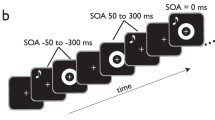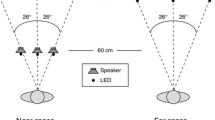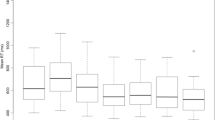Abstract
Enhanced behavioral performance mediated by multisensory stimuli has been shown using a variety of measures, including response times, orientation behaviors, and even simple stimulus detection. However, there has been little evidence for a multisensory-mediated improvement in stimulus localization. We suggest that this lack of effect may be a result of the high acuity of the visual system. To examine whether normal visual acuity may be masking any potential multisensory benefit for stimulus localization, we examined the ability of human subjects to localize visual, auditory and combined visual-auditory targets under conditions of normal and degraded vision. Under conditions of normal vision, localization precision (i.e., variability) was equivalent for visual and multisensory targets, and was significantly worse for auditory targets. In contrast, under conditions of induced myopia, visual localization performance was degraded by an average of 25%, while auditory localization performance was unaffected. However, during induced myopia, multisensory (i.e., visual-auditory) localization performance was significantly improved relative to visual performance. These results show a multisensory-mediated enhancement in human localization ability, and illustrate the cross-modal benefits that can be obtained when spatial information in one sense is compromised or ambiguous.


Similar content being viewed by others
References
Corneil BD, Van Wanrooij M, Munoz DP, Van Opstal AJ (2002) Auditory-visual interactions subserving goal-directed saccades in a complex scene. J Neurophysiol 88:438–454
Frassinetti F, Bolognini N, Ladavas E (2002a) Enhancement of visual perception by crossmodal visuo-auditory interaction. Exp Brain Res 147:332–343
Frassinetti F, Pavani F, Ladavas E (2002b) Acoustical vision of neglected stimuli: interaction among spatially converging audiovisual inputs in neglect patients. J Cogn Neurosci 14:62–69
Frens MA, Van Opstal AJ (1995) A quantitative study of auditory-evoked saccadic eye movements in two dimensions. Exp Brain Res 107:103–117
Frens MA, Van Opstal AJ, Van der Willigen RF (1995) Spatial and temporal factors determine auditory-visual interactions in human saccadic eye movements. Percept Psychophys 57:802–816
Hairston W, Wallace M, Vaughan J, Stein B, Norris J, Schirillo J (2003) Visual localization ability influences cross-modal bias. J Cogn Neurosci 15:1–10
Harrington LK, Peck CK (1998) Spatial disparity affects visual-auditory interactions in human sensorimotor processing. Exp Brain Res 122:247–252
Howard IP, Templeton WB (1966) Human spatial orientation. Wiley, London
Hughes HC, Reuter-Lorenz PA, Nozawa G, Fendrich R (1994) Visual-auditory interactions in sensorimotor processing: saccades versus manual responses. J Exp Psychol Hum Percept Perform 20:131–153
Lovelace C, Stein B, Wallace M (in press) An irrelevant light enhances detection in humans: A psychophysical analysis of multisensory integration in stimulus detection. Cognit Brain Res
McGurk H, MacDonald J (1976) Hearing lips and seeing voices. Nature 264:746–748
Schroger E, Widmann A (1998) Speeded responses to audiovisual signal changes result from bimodal integration. Psychophysiology 35:755–759
Stein BE, Meredith MA (1993) The merging of the senses. MIT Press, Cambridge, MA
Stein BE, Huneycutt WS, Meredith MA (1988) Neurons and behavior: the same rules of multisensory integration apply. Brain Res 448:355–358
Stein B, Meredith M, Huneycutt W, McDade L (1989) Behavioral indices of multisensory integration: orientation to visual cues is affected by auditory stimuli. J Cogn Neurosci 1:12–24
Welch RB (1999) Meaning, attention, and the "unity assumption" in the intersensory bias of spatial and temporal perceptions. In: Musseler J (ed) Cognitive contributions to the perception of spatial and temporal events, vol 129. Elsevier, Amsterdam, pp 371–387
Welch RB, Warren DH (1986) Intersensory interactions. In: Thomas JP (ed) Handbook of perception and human performance, vol 1: sensory processes and perception. Wiley, New York, pp 25.21–25.36
Author information
Authors and Affiliations
Corresponding author
Additional information
The study was supported by NIH DC00057, Forsyth County United Way, and WFUSM Venture Funds. The authors would like to thank Tom Redick for his assistance
Rights and permissions
About this article
Cite this article
Hairston, W.D., Laurienti, P.J., Mishra, G. et al. Multisensory enhancement of localization under conditions of induced myopia. Exp Brain Res 152, 404–408 (2003). https://doi.org/10.1007/s00221-003-1646-7
Received:
Accepted:
Published:
Issue Date:
DOI: https://doi.org/10.1007/s00221-003-1646-7




